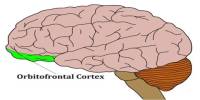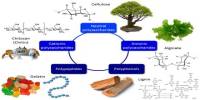After a lightning strike, it takes some time for the sound of thunder to reach our ears. The photoacoustic (PA) effect, which causes materials nearby to quickly expand as the lightning’s optical energy is absorbed and transformed into thermal energy, is responsible for this phenomena.
Photoacoustic computed tomography (PACT), a leading preclinical and clinical imaging method to obtain images inside the body without the use of a contrast agent, uses this PA effect.
However, without such hardware, its poor image quality leads to higher cost and a slower imaging speed, even though it can be enhanced with numerous ultrasonic sensors and a multi-channel data acquisition (DAQ) system.
A POSTECH research team consisting of Professor Chulhong Kim and Ph.D. candidate Seongwook Choi (Department of Convergence IT Engineering), Professor Seungchul Lee and Ph.D. candidate Soo Young Lee (Department of Mechanical Engineering), and Dr. Jinge Yang (Department of Electrical Engineering) has presented a deep-learning approach to achieve faster and high-resolution imaging for the PACT system. The finding, the first in the world, was recently published in Advanced Science.
This study is the first in the world to use deep learning on the three-dimensional multiparametric PACT system, although other studies had used it to improve resolution. In addition to whole-body imaging of animals, the researchers have shown that it is possible to track the movement of tissues in the heart, kidney, and brain in high-resolution, high-speed, and real-time.
Additionally, they’ve demonstrated for the first time how deep learning may be used in pharmacokinetics, which involves injecting medications into blood vessels and monitoring how they distribute throughout the body, and functional imaging, which gauges the oxygen saturation of various tissues.
The researchers have proven that an artificial neural network developed for use on animals may also be used on people through this study. Because the artificial neural network runs independently of the optical wavelength used to train the artificial neural network, it is also significant that they have simplified the hardware equipment without losing speed or quality.
The research team believes that if the findings are published, PACT technology will be widely used in a variety of contexts since it can provide high-resolution, fast photographs independent of the hardware requirements. This study has been chosen as the back-cover paper in the most recent issue of Advanced Science in recognition of its significance.
This study was conducted with the support of the Mid-level Technology, BRIDGE Convergence R&D Program, Global Ph.D. Fellowship, Global Frontier Program, Korea Medical Device Development Fund, Industrial Innovation Talent Growth Support (R&D) and the BK21 Project of the National Research Foundation of Korea.
















